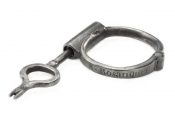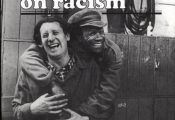Captioned, “Jaw-Bone, or House John-Canoe,” along with “Koo-Koo, or Actor Boy” this “is the most conspicuous of those who annually attract public notice.” He dresses in a pseudo military style and “in common with the whole John Canoe fraternity,” he is always masked “with a profusion of dark hair, which is suffered to fall in large wild ringlets over his face and shoulders, giving his appearance an extraordinary and savage air . . . The house is usually constructed of pasteboard and coloured papers—it is also frequently highly ornamented with beads, tinsel, spangles, pieces of looking glass, etc. etc. and being firmly fixed on a board, the bearer is enabled to balance it whilst going through many….. contortions of body and limbs miscalled dancing.”
These illustrations are also shown in the most definitive scholarly work on Belisario and the Jamaica of his time, the lavishly illustrated, Art and Emancipation in Jamaica: Isaac Mendes Belisario and his Worlds, by T. Barringer, G. Forrester, and B. Martinez-Ruiz and others (New Haven : Yale Center for British Art in association with Yale University Press, 2007).
John Canoe (Jonkonnu, JonKanoo) Dancers, Jamaica, 1837; Image Reference Belisario05, as shown on www.slaveryimages.org, sponsored by the Virginia Foundation for the Humanities and the University of Virginia Library.



